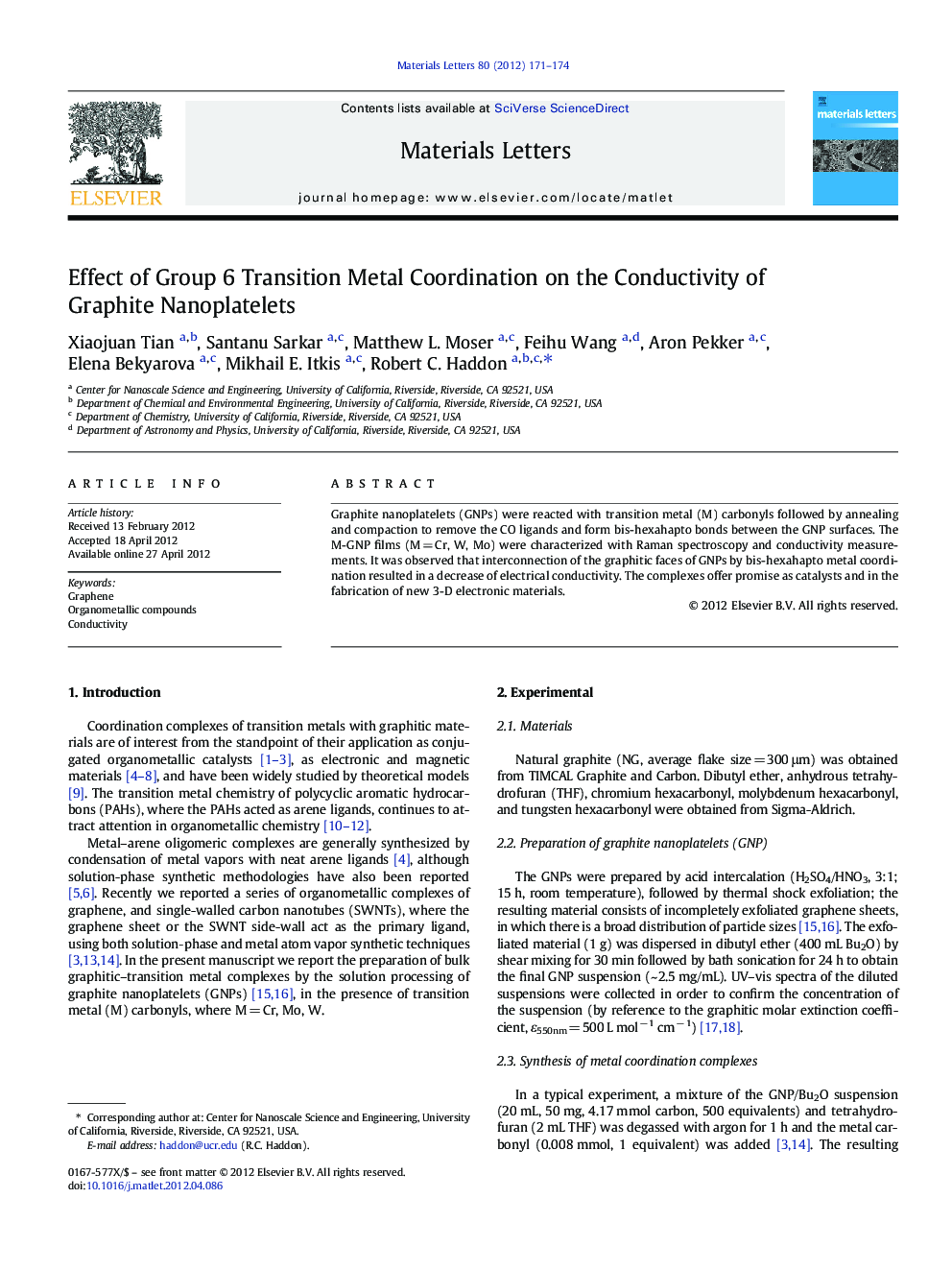| Article ID | Journal | Published Year | Pages | File Type |
|---|---|---|---|---|
| 1646447 | Materials Letters | 2012 | 4 Pages |
Graphite nanoplatelets (GNPs) were reacted with transition metal (M) carbonyls followed by annealing and compaction to remove the CO ligands and form bis-hexahapto bonds between the GNP surfaces. The M-GNP films (M = Cr, W, Mo) were characterized with Raman spectroscopy and conductivity measurements. It was observed that interconnection of the graphitic faces of GNPs by bis-hexahapto metal coordination resulted in a decrease of electrical conductivity. The complexes offer promise as catalysts and in the fabrication of new 3-D electronic materials.
Graphical abstractFigure optionsDownload full-size imageDownload as PowerPoint slideHighlights► Bulk graphitic–transition metal complexes prepared by solution techniques. ► Graphene–metal complexes characterized with Raman and conductivity measurements. ► Graphitic faces interconnected by bis-hexahapto metal coordination. ► Interconnection of graphitic faces results in decreased electrical conductivity. ► The larger group 6 metal atoms exhibit the highest conductivities.
